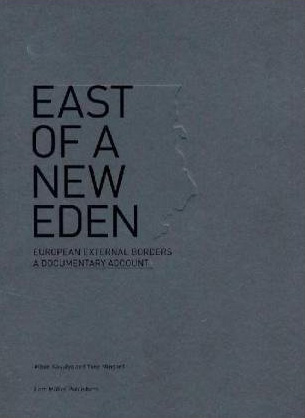Review: East of a New Eden by Alban Kakulya and Yann Mingard

When I grew up, which is not that long ago (or so I want to believe), Europe was cut in half by what people called the Iron Curtain. The Iron Curtain was more like a fence, albeit one that featured automatic guns (plus an assortment of other gruesome stuff). With a few exceptions, the western half of Europe was part of what was called the European Community, a group of countries, whose sole purpose appeared to be to determine how much milk and butter its farmers could first produce and would then destroy (at least that was my impression - I was a young boy, what did I know of economic realities? Now, I’m a grown man, and from what I heard they’re still doing that. Looks like I never learned to understand economic realities). If you wanted to travel from one country to another one, you would cross a border, which featured border posts and people who would pretend as if there was something to inspect in your passport. I remember once my family went to Holland, and there was no control. I thought “Did that just happen? Did I just get into another country without somebody checking?”
Fast forward thirty years (or so), and the Iron Curtain is gone - as are most of the borders I knew as a child. There is a single, united Germany, and the European Community has become the European Union (I’ve lost track which countries are members). You can travel between most countries as if there was no actual border, and usually you don’t even have to change your currency: You pay for your coffee in Düsseldorf, in Milan, or in Paris with Euros (the coffee will still taste differently, though). That sounds like a great improvement, and it certainly is, if you live inside the European Union. As it turns out, part of intra-European borders coming down was to make sure that those around the European Union were going up. Because, you see, there are all those people outside who only want to steal European jobs (does that sound familiar to American readers?).
Enters East of a New Eden by photographers Alban Kakulya and Yann Mingard (plus text by various other authors and special design by yet another group of people). It really is just a coincidence that I am reviewing the book after just having published some thoughts on how photo books could be a bit diverse. I have had the book on my “to review” pile for a couple of weeks. But of course, I am immensely grateful for this opportunity, because it’s one thing to talk about what photo books could do, and quite another thing to have an actual book that looks a bit different.
East of a New Eden is a real photo book, since it features photographs of border guards, borders, border crossings - all at the eastern edge/border of the European Union. But it is more than that. In addition to the photographs, there are satellite images, marking the locations of some of the photographs (using GPS tracking information). There are various in-depth essays, all of which talk about aspects of this European border. And there what are called “graphical maps” of “Fortress Europe”: “Over 13,000 refugee deaths in 15 years,” with details upon details (“Accident: 10, Drowned: 35, Suffocated: 58, …”). Yes, that’s right, all those people died trying to enter Europe, to enjoy the same peace and prosperity Europeans have been enjoying for many years now.
So once you realize what East of a New Eden is all about, and once you start reading the texts, you’ll start understanding what the images show. It’s a bit sobering.
East of a New Eden can be seen as a wonderful example of “form follows function”. Not every photo book needs to feature so much text (or even special graphic design) - but in this context, everything works very well together. The text produces the necessary context for the images, and the photos makes you think about the statistics (for some people it might work the other way around - it doesn’t matter). As a photo book, East of a New Eden
is showing the way for what can be done beyond the usual format of a gallery exhibition on paper. But it is also presents how documentary photography (or maybe photojournalism) can use the format “book” to talk about an issue in depth.
East of a New Eden, by photographers Alban Kakulya and Yann Mingard, featuring essays and graphics by various other authors, 320 pages, Lars Müller Publishers, 2009 (bilingual: English and French)